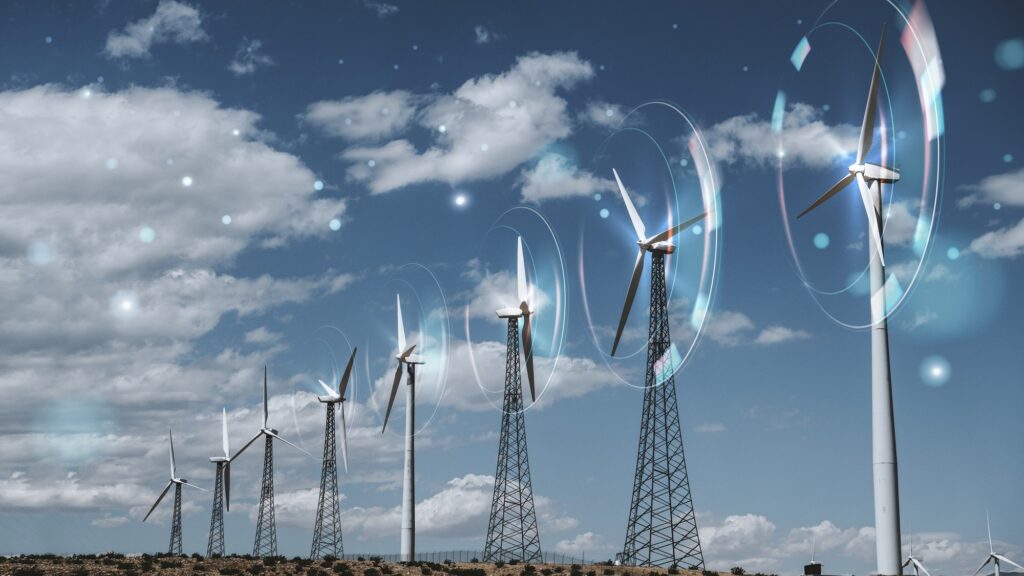It has transcended the realms of being an imperative but rather a necessity in saving a world facing an immediate climatic crisis. Solar and wind energy have reached maturity but only face one big challenge in its current stage: decarbonization for industries and sectors that could not be powered by electricity. Here is where green hydrogen fits into the new revolutionary paradigm for thinking about energy.
What is Green Hydrogen?
Green hydrogen is a clean fuel obtained by electrolysis, where electricity generated from renewable sources, such as wind, solar, or hydropower splits water into hydrogen and oxygen. Conventional hydrogen comes from natural gas and creates carbon emissions; on the other hand, green hydrogen creates no harmful emissions in the production process.
The most exciting thing about green hydrogen is that it can be used in almost anything. It can be used to fuel vehicles, power industries that require high temperatures or energy density—industries that electricity alone cannot easily support.
Why Green Hydrogen Matters in the Energy Transition
The journey to a sustainable energy future is far from switching to electricity. It’s all about decarbonizing all sectors of the economy, and green hydrogen is a key player in that transformation. Here’s why:
1. Decarbonizing Hard-to-Electrify Sectors
Such carbon-intensive sectors include steel, cement, and chemicals, as these processes normally require high-temperature heat generally produced from fossil fuels. Green hydrogen can replace coal and natural gas in such processes, meaning it offers a cleaner way of fueling operations as opposed to fuel-intensive operations. For instance, there is research on testing hydrogen as a coke substitute in steelmaking—the important step that could significantly diminish emissions in one of the world’s most carbon-intensive industries.
Beyond industrial uses, green hydrogen is also coming to transportation. Trucks, ships, and even aircraft—those that need high-energy fuels for long ranges—are possible with hydrogen fuel cells. While electric vehicles are great for short distances, hydrogen is able to provide the needed high-density energy for long journeys and heavy-duty transportation.
2. Energy Storage and Grid Stabilization
One of the biggest problems with all of this renewable energy—solar and wind—is intermittency: these sources of energy do not always produce when we want them. Green hydrogen can provide the solution by using excess renewable energy to store it during high production times and then use it to supply electricity when needed. That hydrogen can then be stored and converted back to electricity during high-demand periods or when renewable generation is low, thus stabilizing the grid and rendering the supply of clean energy reliable.
3. Flexible, Global Energy Solution
While applications are an obvious advantage for green hydrogen, so is its flexibility as to where it can be produced. Hydrogen can be generated in any place in the world with renewable energy, from wind or sun or hydro resources. Countries rich in renewables, like the Middle East or Australia, will easily be able to generate this hydrogen not only for consumption in those countries but for export, as well.
This international scalability makes green hydrogen the focal point of an international market in energy, thereby enabling nations to trade clean energy across international boundaries, much as happens today with oil and gas. It is on the way to an internationally global clean energy market.
Overcoming Obstacles for Broad Acceptance
As exciting the prospects are for green hydrogen, there are also barriers that need to be addressed:
- It is expensive: Green hydrogen is still more expensive than hydrogen produced from fossil fuels. However, with the continuously falling prices of renewable energy and improvement in electrolyzer technology, the cost of green hydrogen would gradually decline with time.
- Infrastructure requirements: To develop from here to everywhere, such significant amounts of infrastructure will require huge investment—from production plants through storage tanks to pipelines—without the required infrastructure, green hydrogen just can’t reach scale in response to global demand.
- Policy Support: Governments will play a key role in speeding up the adoption of green hydrogen through subsidies, a conducive regulatory environment, and clear policy objectives aligned with clean hydrogen projects.
Global Initiatives and Investments
The whole world is waking up to green hydrogen, with massive investments flowing in:
- Europe: In fact, the European Union has set out an ambitious strategy that makes the continent a leader globally in green hydrogen. Germany and the Netherlands are already leading in hydrogen infrastructure investment and focusing on large-scale production and integration into their energy systems.
- Middle East: The Middle East is actually setting itself up to be a front-runner in the green hydrogen market, for the simple reason that it boasts rich solar and wind resources. Already, Saudi Arabia and the United Arab Emirates are looking to take up massive hydrogen projects so they can become major exporters of green hydrogen.
- Asia: Hydrogen has had Japanese and South Korean leadership, but most interestingly, Japan aspires to become a “hydrogen society” by introducing it into homes, transport, and industry.
The Future of Green Hydrogen
The prospects of green hydrogen are enormous in tackling some of the biggest challenges for the future of the global energy transition. It can open the door to the decarbonization of hard-to-electrify sectors, reliable energy storage, and a global clean energy market, which would lead towards a more sustainable, low-carbon world.
Technological advancements in electrolyzers and storage systems coupled with strong government policies and private sector investments will make green hydrogen more affordable and accessible in the years ahead. While still in the nascent stages, a foundation is being laid for a green hydrogen-powered future.
Conclusion: A Pillar in the Energy Transition
Green hydrogen transcends a future innovation: it has already become the cornerstone of the global commitment to reducing carbon emissions and part of the work to build the energy system of tomorrow. Whether in its ability to bring decarbonization to hard-to-decarbonize industries or provide the tools to store and stabilize renewable energy, hydrogen will find itself playing one of the central roles in the energy transition.
This means, with continued investment and policy support as well as innovation in terms of infrastructure, there’s bound to be green hydrogen integrated into the world’s mission towards the climate target and creating a more sustainable energy system. And here is the promising new frontier for reshaping the world.
About Author
With over 40 years of experience in corporate affairs, Mr. Sunil Bajaj is a distinguished leader known for his expertise in policy and regulatory matters. Currently the Group Director – Corporate Affairs and Development at Aditya Birla Group, he spearheads the group’s strategic policy initiatives, strengthening its connection with government bodies and industry stakeholders.
His career journey began in 1983 as a management trainee at Indian Express, followed by a pivotal role at Sahara Group, where he helped build their media house. His media and communication expertise laid the foundation for his leadership roles at Essar Group, where he served as Director and Head of Corporate Relations.
A strong advocate for social causes, Mr. Bajaj is actively involved in philanthropic work, especially in the areas of healthcare and education for underprivileged children. He serves on the board of Living Media (India Today) and is an alumnus of BHU. A passionate traveler, he continuously seeks new experiences to broaden both his personal and professional horizons.

